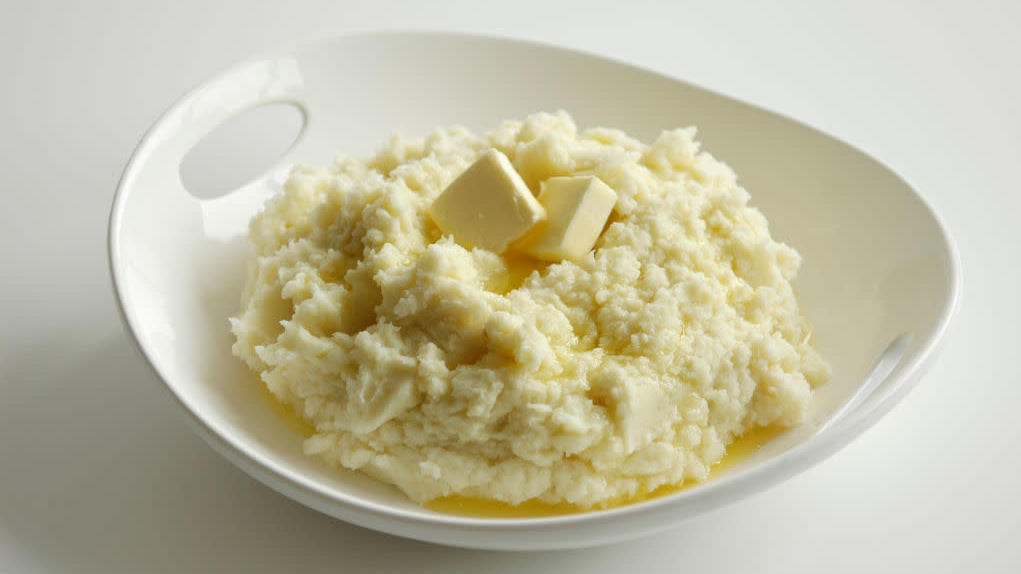What's The Best Way To Make Mashed Potatoes?
Tips on how to make your mashed potatoes lighter, airier, thicker, or denser.
We may receive a commission on purchases made from links.
While potatoes are delicious in any form, and at any time of year (or, really, any time of day), the winter holidays bring a renewed focus on how to prepare mashed potatoes. But how does one go about preparing the "best" mashed potatoes? And what does that even mean?
Whether or not something is really the best is obviously relative and leans pretty heavily on personal preference and culture. But how you handle your potatoes, and choosing the right type, will make a huge difference when it comes to preparing the mashed potatoes of your dreams.
According to Harold McGee's seminal food science reference book, On Food And Cooking, potatoes break down into two categories: "mealy" and "waxy." Mealy potatoes include the ubiquitous russet—often labeled and sold as a "baking potato"—which contain higher levels of dry starch. When you cook them their cells swell up and then separate, resulting in "a fine, dry, fluffy texture" well suited for frying, baking, or mashing. Conversely, waxy potatoes—like red and gold varieties—have cells that adhere to each other, and after cooking will have a texture McGee refers to as "solid, dense, moist." He writes that this makes them a good choice for gratins, potato cakes, and salads.
In order to produce mashed potatoes of specific consistencies you'll need to consider starch levels, how finely you mash the potatoes, the degree to which you "lubricate and enrich" your mashed potatoes using fat and liquid, and how gently (or roughly) you treat your potatoes after they've been mashed.
For light, fluffy mashed potatoes
Use mealy varieties (such as russet) and crush them to what McGee describes as a "fine particle size." I like to use a food mill for this, as that way the consistency is more uniform, but a potato ricer also works well. Gently incorporate fat or liquid, taking care not to over-beat the potatoes; doing so will damage their cell walls and release more starch, making the mashed potatoes gluey.
If you really want to make sure they're light, you can also rinse away excess starch before you cook the potatoes; just peel them, cube them up while they're raw, and rinse them in water before you boil them. This trick also works for other types of potato recipes where you want less starch, like Fuchsia Dunlop's mind-blowing stir fried potato slivers with chili and Sichuan pepper.
For denser, creamy mashed potatoes
Use waxy varieties, like red and gold varieties, and mash them very finely. This will release more starch (which you want) but will also make it harder to incorporate fats and liquid. If you work them hard and long enough, though, you'll end up with mashed potatoes that have "the lightness of whipped cream." If you want something denser, don't worry so much about whipping them quite so thoroughly.
These two specific methods of preparation are hardly your only options. Rather, they just provide some basic examples of how to leverage different types of potatoes, and their starch, to get specific results. If you want mashed potatoes that are lumpier, or thicker, or are a mix of mealy and waxy potatoes (which I highly recommend), go for it. If you have a family recipe you love, or a recipe from a particular country or culture, that doesn't align with these instructions, there's of course nothing wrong with that. But if you've ever wondered how to make your potatoes lighter, airier, thicker, or denser, this will let you maximize your cooking process to obtain the best results.
